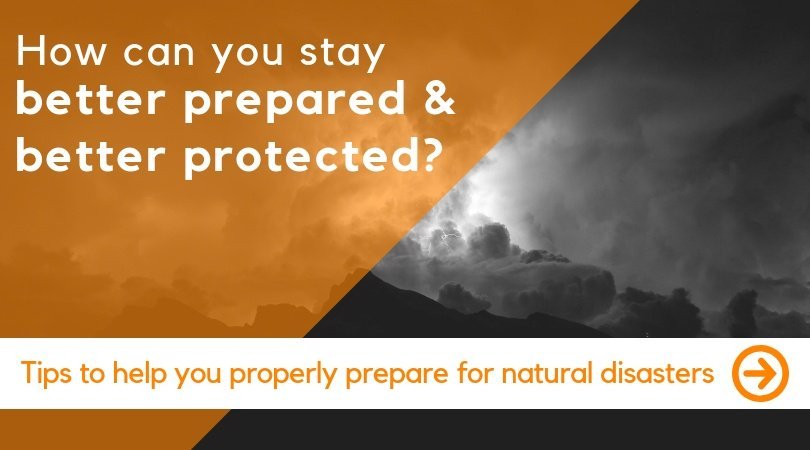Utilize these tips to prepare your property before a cold front hits
"By failing to prepare, you are preparing to fail." - Benjamin Franklin
Most of the country is enjoying the calm and cool autumn weather – but winter will be here before we know it (a.k.a. frigid temperatures, frozen sidewalks and snowy storms). Working to prep your buildings and team now or periodically can help reduce damages later on.
When your priority is providing an exceptional level of care to your clients, you don't want to find yourself stuck with frozen pipes and water damage. Building a winter maintenance strategy can help you ensure your clients are safe and warm all winter long.
Don’t forget these crucial tips when you’re prepping for chilly temperatures:
- Keep an eye on your heating system
When you're facing winter weather and ready to warm up your facility, you don't want to turn on the heat only to find out that it isn't functioning. Before you have to handle freezing temperatures, give it a test run to make sure everything is working properly. Whether you have an internal maintenance team or contract externally, create a schedule you can follow to avoid running into heating issues. At the same time, inspectors should also check all weather proofing found in your building, whether it’s around your windows or doors.
Every year, organizations fall victim to frozen pipes because their building may not be warm enough. These pipes can then crack, causing water damage within the facility. The American Red Cross suggests maintaining a temperature of 55 degrees throughout your building to help prevent frozen pipes. Sprinkler systems are especially susceptible to freezing, so interior sprinklers should be inspected frequently and exterior systems should be drained and turned off for the winter months. Use this list of tips to help prevent a freeze-up in your facility.
- Take time to check your roof
Winter weather can be unpredictable, and for certain areas of the United States, it can mean piles of snow dumped on your building. Many parts of the U.S. saw record snowfall last year – such as Erie, Pennsylvania, where they handled four feet of snow in just 30 short hours. You'll want to have your roof checked periodically so that damage from the weight of snow may be prevented through routine maintenance. The Insurance Institute for Business & Home Safety provides a guide to help you determine how much snow your roof can handle.
You'll want to check for any obvious damage first, like cracks or holes. Then you'll want to think creatively about where your roof is most susceptible to possible issues. These areas include gutters, downspouts and low slopes. Typically, snow will need to be cleared from these spots because it can either clog the spouts or it won't be able to run off naturally. Prepare ahead by having a snow rake on hand or contacting a professional team to handle snow removal before the season begins.
- Prepare with your clients in mind
Above all else, prepare your building for winter by focusing on the the safety of your clients, staff and visitors. Think ahead about any struggles they may face in the winter months and prepare to help avoid those issues.
Many of your clients are likely settled inside throughout the winter, but they have visitors who are excited to see them and spend some time with them. When visitors come to your facility, there are a few things you need to think about. When it comes to the exterior of your building, you'll want to make sure your sidewalks are in great shape. Take time to seal any cracks in walkways or pavement. In the case of snowfall, you'll want to make sure you have snow removal plans ready to go. Whether your staff is responsible or you hire an external company, you should have a team ready to clear snow and salt all walkways. Entrances and exits to your building should have rubber mats and should be kept dry to help prevent slips and falls. Ensuring that your team is prepared to handle all that comes with winter storms and the cold can help protect your clients’ experience while under your care.
- "Prepare the umbrella before it rains." - Malay Proverb
It doesn't hurt to be over-prepared – but it certainly hurts when you're under-prepared. We know summer just ended and you might not want to think about snowy days just yet, but they are on the way. Preparing for winter temperatures is the best opportunity you have to help prevent damages and hassle later on. Taking action now can only benefit you in the long-run. Thorough inspections of your roof, exterior, heating systems and piping are an essential aspect of your winter preparation planning. Providing excellent health care to your clients should remain your priority – not frozen pipes or a caving roof.
How does your facility prepare for the cold of winter? Share your tips! You could help another organization prevent potentially disastrous issues.
DISCLAIMER
The information contained in this blog post is intended for educational purposes only and is not intended to replace expert advice in connection with the topics presented. Glatfelter specifically disclaims any liability for any act or omission by any person or entity in connection with the preparation, use or implementation of plans, principles, concepts or information contained in this publication.
Glatfelter does not make any representation or warranty, expressed or implied, with respect to the results obtained by the use, adherence or implementation of the material contained in this publication. The implementation of the plans, principles, concepts or materials contained in this publication is not a guarantee that you will achieve a certain desired result. It is strongly recommended that you consult with a professional advisor, architect or other expert prior to the implementation of plans, principles, concepts or materials contained in this publication.
This blog post may contain the content of third parties and links to third party websites. Third party content and websites are owned and operated by an independent party over which Glatfelter has no control. Glatfelter makes no representation, warranty, or guarantee as to the accuracy, completeness, timeliness or reliability of any third party content. References to third party services, processes, products, or other information does not constitute or imply any endorsement, sponsorship or recommendation by Glatfelter, unless expressly stated otherwise.
Related posts
The challenges that caregivers face are not easy. We compiled some quick tips for managing family interactions in hospice and palliative care settings.
In summer 2024, weather will be unpredictable, but these are the weather events you can expect, depending on location.
There's so much to learn about nursing, but here's 10 fascinating facts as we celebrate National Nurses week.




.png?height=300&name=Glatfelter%20Team%20-%20Blog%20-%20Author%20(1).png)




Submit a Comment